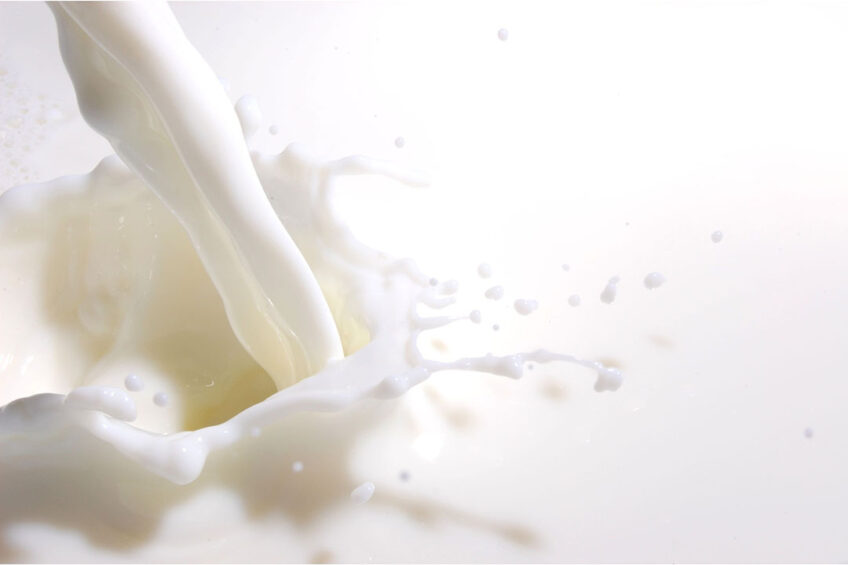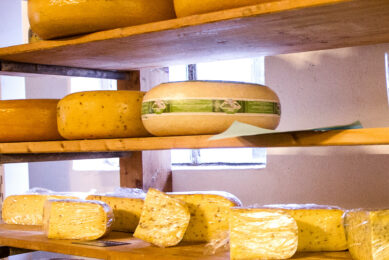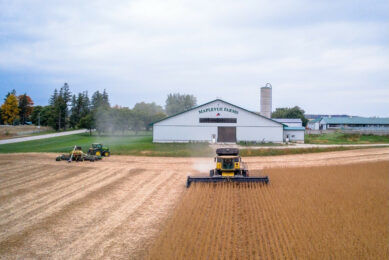Milk down the drain in Canada: Calls for change intensifying

Dumping milk – literally dumping down the drain in the barn, rather than it being consumed in some way – is nothing new in Canada. It’s been happening for over 50 years, and it’s related to Canada’s national milk supply management system.
However, recent developments are highlighting problems with the system and the current calls for change are intense.
At this point, we don’t know how much milk is currently being dumped across the country, says Dr Sylvain Charlebois, senior director of the Agri-Food Analytics Lab at Dalhousie University in Nova Scotia. “Right now, nothing is being measured, so nobody knows how significant the problem is,” he says. “All we know is that dumping is not uncommon. The Canadian Dairy Commission (CDC) and the provincial marketing boards just don’t want to talk about it, as it exposes the dark side of the quota regime,” said Charlebois, who is currently working with colleagues to nail down a number, but cannot comment further at this time.
To review supply management, dairy farmers in Canada inherit or purchase ‘quota’ for a certain amount of milk, for which they are required by the CDC to charge a mandated rate. Farmers are only paid for the milk within their quota, and any surplus must be put down the barn drain. Any sale of milk outside quota could result in steep fines or even the suspension of producer licences.
There are certainly strengths and weaknesses to supply management, but many are critical of it from a consumer standpoint. As explained in one of Canada’s 2 national newspapers, “milk dumping…is done very deliberately to maintain high prices for Canadian milk. Ever since the 1970s, Canadian dairy farmers have been subject to a state-sanctioned cartel that artificially limits supply in order to drive up prices and ensure profitability for farmers.”
Extra milk dumping
On top of an unknown amount of ongoing dumping, during the pandemic in April 2020, dairy farmers in the province of Ontario were advised by the provincial marketing board that milk dumping would start, but payment for normal quota volumes would continue as normal. Milk demand had dropped at that point due to the closure of schools, restaurants and other businesses. The board called it an “extraordinary measure”.
Then, over the recent 2022-2023 holiday season, a huge blizzard in Ontario and its related extensive road closures caused about 45% of the province’s farmers to be directed to dump thousands of litres of milk. In this case, the board spread out the financial losses across all the dairy farmers (over 3,300) in Ontario.
This did not sit well with some of them, including Paul Vickers. He stated to the media: “I have dumped milk other years and nobody has really given it a second thought or a second glance. Why is it any different when 1 or 2, or a few people do it, as opposed to a larger percent of the producers?”
Afterward, the board said it will consider adjusting its emergency response policies.
Ongoing dumping
Let’s return to ongoing dumping of milk in Canada, and why milk that’s produced excess to a farm’s quota amount can’t be used in other ways.
The issue gained national attention on 1 February 2023, when one of the owners at Huigen Bros. dairy farm in southern Ontario posted a no-holds-barred TikTok video on the subject. Jerry Huigen stated that they were currently dumping 30,000 litres of milk because their production was over quota due to the more consistent feed that cows across the country tend to receive in the winter. “This time I’m going public,” he stated. “I want [the public] to see the pain that growers have, of 365 days a year, as little kids growing up on a dairy farm, came from Europe, work, work, work and here we are.”
“…with a government-sanctioned quota system, milk is a public good in Canada. Dumping milk should be illegal.”
At that point, the CDC had boosted what Canadian dairy farmers have to charge for their milk under the quota system for the third time in about 12 months. In early 2022, ‘farm gate prices’ rose a substantial 8.4%, then 2.5% in September 2022 and 2.2% in February 2023.
Charlebois has asked the CDC for the data that supports these price hikes but they have denied all requests. “Without any data, it’s hard to see if the CDC is not distorting results,” he says. He surmises that price hikes could be due to higher feed, fuel, fertilizer and labour costs for farmers, “but we don’t know for sure. With data access, we could tell how farms are actually managed in Canada, which likely the reason the CDC has continued to be so secretive.”
On Twitter, Charlebois supported Huigen’s video message. “This dairy farmer deserves our respect,” he posted. “He went public, dumping 30,000 litres of milk today while milk prices are going up. He’s devasted because supply management does not work.” He added in another Twitter post, “with a government-sanctioned quota system, milk is a public good in Canada. Dumping milk should be illegal.”
However, Charlebois does not think the video will cause the CDC and/or the provincial dairy boards to create ways for over-quota milk to be used (for profit or donation) instead of dumped. “Dairy farming in Canada is largely self-regulated, and the agenda is led by highly-politicised boards,” he says. “Change is impossible unless boards recognise the problem.”
He adds that “supply management is the perfect policy to eliminate all on-farm waste. Huigen’s message is very clear. Not one dairy farmer produces the exact amount of milk he/she needs to produce every month. Cows aren’t machines, and dairy farmers will try to overshoot, making sure they meet quota. Supply management can create a programme in parallel to manage surpluses. Right now, boards are just using the easiest, simplest, and cheapest way to eliminate surpluses. Boards will get farmers to criticise Huigen and will label him as incompetent, because it works. But he was making an important point, and few, I suspect, will listen.”
Others, however, have criticised Huigen and implored the public to put his words into context.
One article in early February pointed out that Ontario’s board allows every dairy farmer in that province to carry an ‘over-quota production float’ of 10 days of the farm’s daily quota as needed, for which a farmer is paid in full. The author also points out that many dairy farmers would say Huigen should have culled some cows or dried some off early to ensure his winter production better matches his quota.
Dairy farmers petition
By 10 February, fellow Ontario dairy farmers John and Anna van Dyk had started an online petition to end milk dumping. John stated to a Canadian news outlet that “there’s no need to have this practice…Why don’t we as an industry grab this issue by the horns and change things?”
The petition points out that “with a strategy and some investments, our sector can have a positive impact on the environment, generate more revenue growth and develop new markets for our great product.”
In response, Charlebois posted on Twitter a little known fact in Canada and beyond. “The Chinese figured how to export our own milk to China, while Canadian dairy farmers claimed it wasn’t possible. You can dehydrate milk, store it and create a strategic reserve, like we have with butter. CDC would be responsible.”
Charlebois is referring to the Chinese-owned firm Canada Royal Milk in Kingston, Ontario, which makes formula from Canadian milk that’s then shipped to China. To build the plant, the firm received both provincial and federal funding in 2017.
Charlebois says this plant should have been built by Canadian dairy farmers. Most of them, he says, don’t understand supply management themselves, and furthermore, they “have no understanding of how the policy can be adapted to modern expectations. So, when someone comes forward with any radical idea, they just don’t understand why changes are necessary. The Chinese plant in Kingston should have been built by dairy farmers, but their lack of foresight got them to believe it was impossible to export milk abroad, especially not to China.”
The Canadian public is also not generally aware that the former head of the CDC who “facilitated a $225-million investment” by Canada Royal Milk to build its plant also later took a paid position on the company’s board of directors.
Both CDC and Dairy Farmers of Canada were sent many questions but refused to provide responses for this article.
Join 13,000+ subscribers
Subscribe to our newsletter to stay updated about all the need-to-know content in the dairy sector, two times a week.










